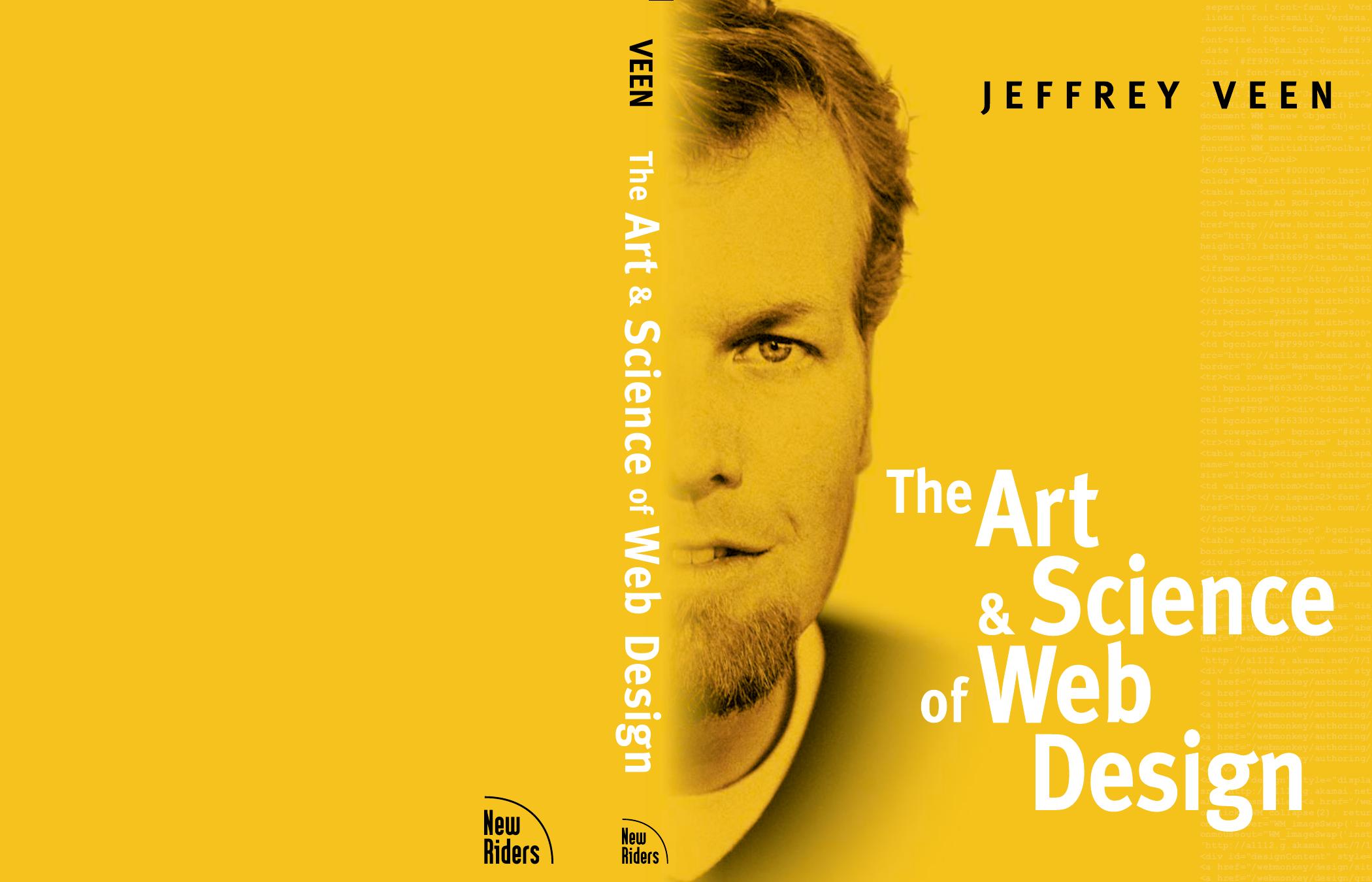The Art & Science of Web Design by Jeffery Veen

Author:Jeffery Veen [Veen, Jeffery]
Language: eng
Format: epub, pdf
Published: 0101-01-01T00:00:00+00:00
ASWD_001121.qxd 11/27/00 11:18 AM Page 116
116
T h e A r t & S c i e n c e o f We b D e s i g n C h a p t e r F o u r - B e h a v i o r 117
<table width="100%" border=0 cellpadding=0 cellspacing=0>
<FRAMESET cols="100,*,100" >
<tr>
<FRAME src="myNavigation.html">
<td width=75 valign=top align=right></td>
<FRAME src="myDocument.html">
<td valign=top align=left>
<FRAME src="thirdColumn.html">
<img src="spacer.gif" height=1 width=250
</FRAMESET>
alt="spacer">
<br>
simply means that the browser should draw three framesâ
<!-- page content -->
two 100 pixel columns fixed at the edges of the page, and etc.
one that takes up however many pixels are left in the center of the browser windowâagain, a liquid design.
Now, when the browser is resized to the point where The examples above, however, are only glimpses into the center column would be smaller than 250 pixels, the what is possible within the context of liquid design. Letâs cell bumps against the invisible spacer image, and is con-look at a real world example.
strained to that size. There are drawbacks to this strategy, Kvetch.com is fun. It also, from time to time, can be a though. The image may be negligibly small, but it little troubling.
requires a request to the server. That
The site was designed as a virtual outlet for folks to let can slow things down a bit. It may
off a little steam. Anonymous users can post just about any-also be considered bad form to con-
thing theyâre angry about to the site. Interested voyeurs can strain any part of the user experience, peek into any of a half dozen subject areas to see the outra-especially with a hack like a single-
geous postings. Itâs interesting, in a twisted sort of way.
pixel image. I find it a fair compro-
mise. Users get a flexible representa-
tion of the interface, while designers
can maintain a certain level of visual
control over how their pages are ren-
dered.
A Liquid Application
This functionality need not be limited
to tables, either. Page layouts using
frames can also take relative values for
the height or width of certain regions.
Frames can be sized either with per-
centage values like tables, or with the
Designer Derek Powazek built an interface to his use of an asterisk. This syntax tells the kvetch.com project that would approximate a sort of âcom-Without any sort of constraint, a liquid browser to simply use whatever real
plaint application.â The site looks as if it is a control panel interface can get too wide or narrow.
estate is left over. So...
that would exist in the real worldâthe edges of the interface are curved and lit by a distinctive light source.
Download
The Art & Science of Web Design by Jeffery Veen.pdf
This site does not store any files on its server. We only index and link to content provided by other sites. Please contact the content providers to delete copyright contents if any and email us, we'll remove relevant links or contents immediately.
I'm the Teacher, You're the Student by Allitt Patrick;(193)
Competing on Culture by VanWagoner Randall;Sydow Debbie L.;Alfred Richard L.;(171)
Teaching Skills For Dummies by Sue Cowley(162)
The Art & Science of Web Design by Jeffery Veen(152)
Maker-Centered Learning by unknow(136)
People Skills by Thompson Neil(129)
Managing Unstoppable Learning by Hierck Tom;(121)
Lorange P. Learning and Teaching Business...Lessons...2022 by Unknown(121)
Motivating Defiant and Disruptive Students to Learn by Rich Korb(116)
The InterActive Classroom by Nash Ron;(110)
Connecting Through Leadership by Kullar Jasmine K.;(109)
Forces of Influence by Ende Fred;Everette Meghan;(109)
Academic Advising and the First College Year by Jenny R. Fox; Holly E. Martin(104)
What We Say and How We Say It Matter by Mike Anderson(103)
Summarization in Any Subject by Wormeli Rick;Stafford Dedra;(103)
Teacher Mentoring and Induction by Portner Hal;(103)
Employee of the Month by Tracey Rogers(102)
Teaching Behavior by Terrance M. Scott(99)
Leveraging Data for Student Success : Improving Education Through Data-Driven Decisions by Laura G. Knapp; Elizabeth Glennie; Karen J. Charles(96)
